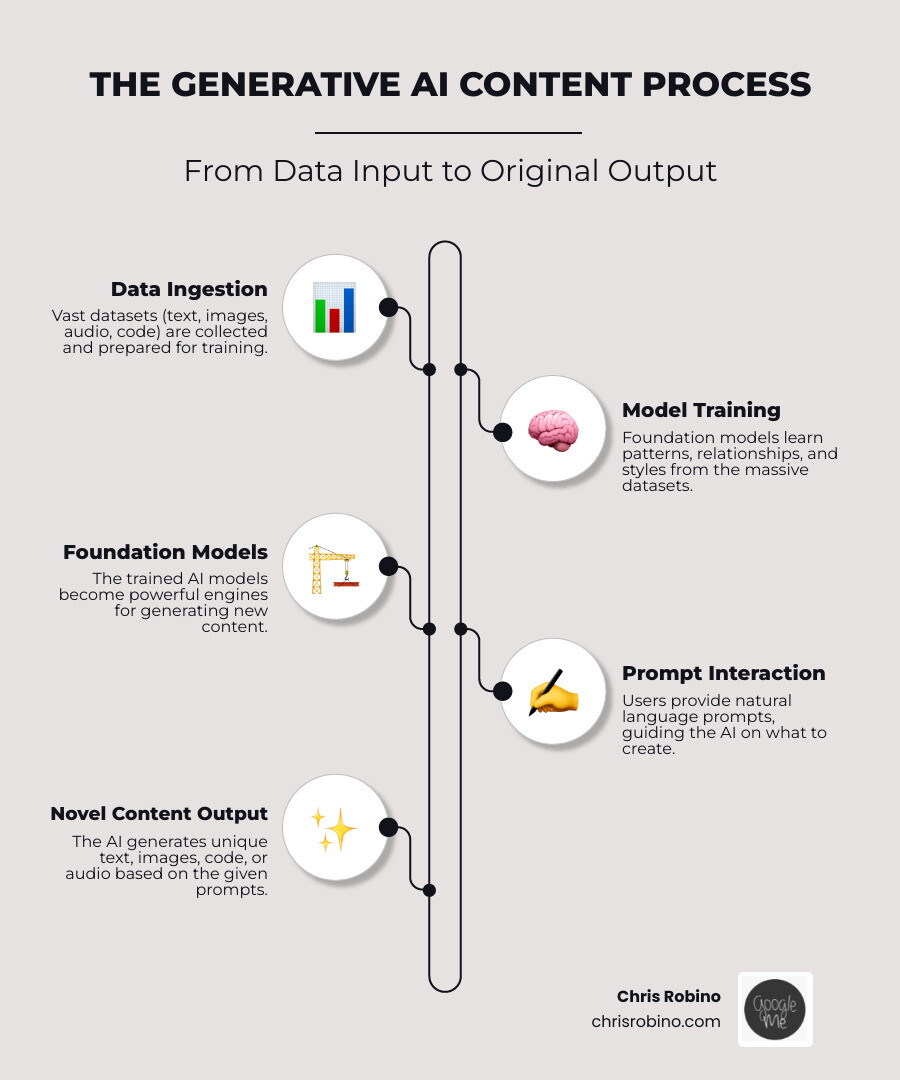The Enterprise SEO Playbook: Strategies That Scale
Search is often the largest, most efficient source of qualified demand for large organizations—but only when it’s treated as a scalable, cross-functional discipline. Enterprise SEO is not about one-off keyword tweaks; it’s about building durable systems that compound results across millions of pages, dozens of teams, and complex tech stacks.
What separates high-performing enterprise SEO programs from the rest is operational maturity: clear governance, reliable technical foundations, measurable content workflows, and constant iteration informed by data. The goal is simple—maximize non-paid visibility, traffic quality, and revenue—while minimizing risk and rework across a sprawling digital footprint.
Key pillars of enterprise SEO:
- Technical excellence at scale: fast, crawlable, well-structured sites that search engines can fully discover and understand.
- Content systems, not one-offs: repeatable frameworks for ideation, production, and optimization across business units and regions.
- Governance and enablement: roles, standards, and training that align product, engineering, content, brand, and legal teams.
- Measurement that matters: forecasting, attribution, and KPI frameworks tied to business outcomes, not vanity metrics.
- Risk management: repeatable playbooks for site changes, migrations, rebrands, and platform consolidations.
I’m Chris Robino, a Digital Strategy Leader with over two decades of experience helping large organizations turn SEO into a reliable growth engine. The guidance below distills the strategies that consistently perform for complex enterprises—practical, scalable, and built to endure algorithmic and organizational change.

Enterprise SEO Strategies That Consistently Perform
High-impact enterprise SEO is a portfolio of ongoing practices, not a single tactic. Focus on building robust systems in the following areas.
1) Architecture, Crawl Budget, and Indexation
- Keep critical content within three clicks from the homepage. Deep, orphaned URLs bleed authority and visibility.
- Maintain clean, hierarchical URL structures. Use consistent naming, lowercase, hyphens, and human-readable patterns.
- Control crawl with intent: robots.txt to prevent waste, meta robots for page-level directives, and canonicals for consolidation.
- Build and maintain XML sitemaps by type (e.g., products, categories, articles). Keep them fresh and limited in size.
- Use log-file analysis to see exactly what search engine bots crawl and how often. Prioritize resources toward high-value templates and undercrawled sections.
2) Site Speed and Core Web Vitals at Scale
- Treat performance as a product requirement. Optimize templates, not just pages.
- Focus on largest contentful paint, interaction latency, and visual stability. Improve via efficient media, critical CSS, preloading key assets, and reducing JavaScript bloat.
- Standardize image handling: modern formats, compression, responsive sizes, and lazy loading.
- Monitor field data by template and device. Tackle regressions with automated alerts.
- Review the official Core Web Vitals documentation for detailed implementation guidance.
3) Internal Linking and Authority Flow
- Create systemized internal links using navigational components, breadcrumbs, related-content modules, and curated hubs.
- Use programmatic rules to surface top-performing or strategic pages across relevant templates.
- Ensure anchor text is descriptive and varied to reinforce topical relationships.
- Maintain an authoritative hub for each core topic, with clusters of supporting pages that interlink in both directions.
4) Structured Data and Rich Results
- Implement schema across key templates (e.g., organization, product, FAQ, article, video, event, local business) to help search engines interpret content.
- Keep markup accurate and aligned with visible content. Validate continuously and monitor errors at scale.
- Use content management conventions so schema stays intact during editorial updates.
- Use a rich results testing tool to ensure proper rendering.
5) International SEO and Global Scale
- Use hreflang to map versions across languages and regions. Ensure one-to-one pairing and consistent canonicalization.
- Localize, don’t merely translate: adapt offers, imagery, measurements, and terminology to user expectations.
- Host regional content on a consistent structure (subfolders or subdomains), and keep navigation findable across locales.
6) JavaScript, Rendering, and Indexing
- Prefer server-side rendering or hybrid rendering for primary content and links. Avoid burying key content behind client-side rendering.
- Defer non-critical scripts and reduce dependencies. Test what renders without JavaScript enabled.
- Provide HTML fallbacks for critical elements that drive rankings and conversions.
7) Faceted Navigation and Duplication Control
- For filters and search facets, constrain indexation to combinations that map to real user demand.
- Use canonical tags, noindex, and parameter handling to prevent duplication from low-value combinations.
- Create static landing pages for high-intent, high-volume combinations and link them in navigation.
8) Content Systems and E-E-A-T
- Build repeatable content briefs: audience, search intent, topical outline, internal links, primary and secondary terms, and differentiation.
- Prioritize expertise and real-world insight. Feature subject-matter experts, cite proprietary data, and demonstrate hands-on experience.
- Establish editorial standards: consistent tone, compliance checks, brand alignment, and accessible language.
- Refresh at scale: identify decaying content, consolidate overlaps, and add depth or multimedia to maintain relevance.
9) Programmatic SEO—Responsibly
- Use data-driven templates to create valuable pages at scale, not thin or duplicative ones.
- Ensure each page solves a specific user problem with unique assets (copy, images, tables, tools, calculators).
- Automate guardrails: uniqueness checks, quality thresholds, and user engagement metrics to monitor performance.
10) Local SEO for Multi-Location Brands
- Maintain accurate, consistent name/address/phone and hours across all listings.
- Create robust location pages with unique content: staff highlights, services, inventory, events, and localized FAQs.
- Encourage and respond to reviews through compliant processes. Use structured data and local business markup.
11) Content Formats Beyond Text
- Publish video, imagery, and interactive tools where they improve outcomes. Optimize titles, descriptions, transcripts, and structured data.
- Repurpose long-form assets into concise, query-matched modules embedded on relevant pages.
- Use FAQs, how-tos, and checklists to target specific intents and increase answer coverage.
12) Digital PR and Authority Building
- Earn coverage with original research, studies, tools, and unique stories. Focus on relevance and authenticity.
- Build relationships with publishers and communities in your vertical. Aim for a balanced backlink profile over time.
- Monitor link health: reclaim lost links, fix 404s with redirects, and avoid manipulative tactics that risk penalties.
13) Migration and Change Management
- Treat replatforms, redesigns, and domain changes as major SEO projects with staged plans and clear owners.
- Map every old URL to a new destination with one-to-one redirects. Preserve internal links, structured data, metadata, and content depth.
- Launch with benchmarks, monitoring, and rollback criteria. Validate sitemaps, canonicals, and hreflang immediately after cutover.
14) Analytics, Forecasting, and KPIs That Matter
- Define north-star metrics tied to business value: non-brand organic clicks, revenue, assisted conversions, and cost avoidance.
- Track share of voice by topic cluster and competitor set invisibly inferred from the market—not by naming or linking—so you understand your relative visibility.
- Segment performance by template, directory, device, and market to identify scalable wins.
- Build forecasts per initiative based on historical baselines, addressable demand, expected click-through, and ramp timelines.
15) Governance, Standards, and Enablement
- Clarify roles: product owns templates and performance; engineering owns speed and rendering; content owns quality and freshness; design owns accessibility and usability.
- Publish SEO standards for URL patterns, navigation, schema, metadata, link policies, and performance budgets.
- Create intake paths and SLAs for SEO requirements in product roadmaps. Review changes before they ship.
- Train stakeholders regularly and keep a searchable playbook with examples, checklists, and dashboards.
These practices turn SEO from a reactive task into a disciplined capability—one that compounds across teams, templates, and markets.

The Future of Enterprise SEO and How to Prepare
Search is evolving from a list of links to a blended, intent-first experience. Enterprises that win will align with user value, structure, and speed—regardless of how results are presented.
Key Trends to Watch
- AI-assisted summaries: Search experiences increasingly surface synthesized overviews. Pages that demonstrate clarity, depth, and authority are more likely to be cited or influence these summaries.
- Multimodal discovery: Visual, voice, and video inputs lower friction for users. Structured data, transcripts, and media optimization will matter even more.
- Zero-click outcomes: More answers appear directly in results. Winning strategies emphasize brand presence, entity understanding, and content that earns inclusion while still driving clicks where it counts.
- Helpful, experience-rich content: Demonstrated expertise, real-world examples, and original data rise above generic copy. Authenticity becomes a durable differentiator.
- Privacy and first-party data: As third-party signals fade, first-party insights power better content, testing, and personalization—respectfully and with clear consent.
A Pragmatic 90-Day Enterprise SEO Plan
-
Weeks 1–2: Baseline and prioritize
- Audit templates, performance, crawl/indexation, and top opportunity clusters.
- Identify quick wins: internal linking boosts, title/meta optimizations, speed wins, and content refreshes.
- Align KPIs and reporting cadence across stakeholders.
-
Weeks 3–6: Fix foundations and ship quick wins
- Implement performance improvements on primary templates.
- Clean navigation and internal linking to support priority clusters.
- Deploy structured data and correct canonical/hreflang issues.
- Refresh or consolidate decaying content and publish a handful of high-impact pages.
-
Weeks 7–10: Build scalable systems
- Stand up content brief templates, editorial workflows, and quality standards.
- Launch programmatic pages for validated demand with strict quality guardrails.
- Establish automated monitoring for speed, crawl coverage, and schema health.
-
Weeks 11–13: Measure, forecast, and iterate
- Publish dashboards by template and topic cluster.
- Forecast impact of the next quarter’s roadmap. Secure resourcing and executive alignment.
- Document lessons learned and update the SEO playbook.
Enterprise SEO Checklist
- Architecture: logical URL patterns; key pages <3 clicks from home; clean sitemaps.
- Crawl/index: log-file insights; intentional use of robots, canonicals, and noindex.
- Performance: Core Web Vitals within targets by template and device.
- Content: briefs, SME reviews, originality, and refresh cycles.
- Structured data: accurate, validated, and monitored.
- Internal linking: hubs and clusters with descriptive anchors.
- International: correct hreflang and localized experiences.
- JavaScript: server-side or hybrid rendering for critical content.
- Programmatic: unique, purpose-built pages with quality safeguards.
- Local: complete listings and robust, unique location pages.
- PR/links: earned authority through relevance and authenticity.
- Governance: standards, training, pre-launch reviews, and SLAs.
- Measurement: non-brand growth, revenue impact, share of voice, and forecast accuracy.
Enterprise SEO rewards teams that invest in systems, not hacks. With the right foundations, processes, and metrics, organic search becomes a compounding asset—fueling demand, lowering acquisition costs, and strengthening brand equity over time. If you’re ready to operationalize these strategies across your organization, I can help you design the roadmap, align stakeholders, and build the capabilities that make results repeatable.
